Nissan Leaf VS Mercedes Vito Transporter – Specs, Efficiency & Price Comparison
Which model is the better choice – the Nissan Leaf or the Mercedes Vito Transporter? We compare performance (217 HP vs 237 HP), boot capacity (394 L vs ), efficiency (16.70 kWh vs 21.20 kWh6.80 L), and of course, the price (30800 £ vs 28800 £).
Find out now which car fits your needs better!
The Nissan Leaf (Hatchback) is powered by a Electric engine and comes with a Automatic transmission. In comparison, the Mercedes Vito Transporter (Cargo Van) features a Diesel, Electric or Petrol engine and a Manuel or Automatic gearbox.
When it comes to boot capacity, the Nissan Leaf offers 394 L, while the Mercedes Vito Transporter provides – depending on what matters most to you. If you’re looking for more power, you’ll need to decide whether the 217 HP of the Nissan Leaf or the 237 HP of the Mercedes Vito Transporter suits your needs better.
There are also differences in efficiency: 16.70 kWh vs 21.20 kWh6.80 L. In terms of price, the Nissan Leaf starts at 30800 £, while the Mercedes Vito Transporter is available from 28800 £.
Compare all the key specs now and find out which model fits your lifestyle best!
Nissan Leaf
The Nissan Leaf stands out as a pioneering model in the realm of electric vehicles, known for its impressive blend of practicality and eco-friendliness. It offers a smooth and quiet driving experience, making it an ideal choice for city commuting and longer journeys alike. The interior design is both comfortable and intuitive, providing drivers with a sense of modernity and ease of use.
details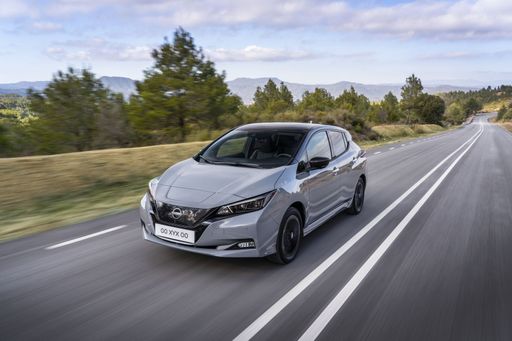 @ germany.nissannews.com
@ germany.nissannews.com
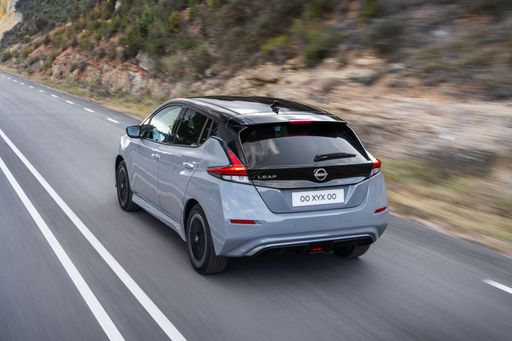 @ germany.nissannews.com
@ germany.nissannews.com
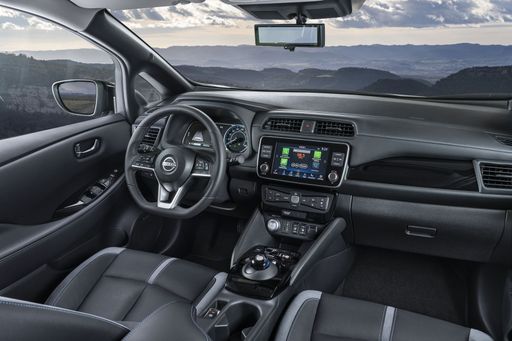 @ germany.nissannews.com
@ germany.nissannews.com
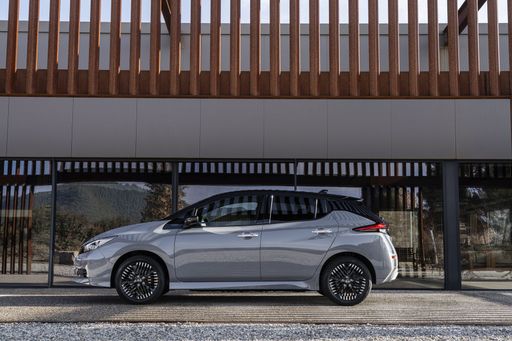 @ germany.nissannews.com
@ germany.nissannews.com
Mercedes Vito Transporter
The Mercedes-Benz Vito Transporter combines practicality with the refined elegance characteristic of its brand. Known for its robust performance, this vehicle offers an impressively versatile interior space, making it ideal for both commercial use and everyday driving. The advanced safety features and modern technological enhancements ensure that the Vito remains a reliable and comfortable choice for drivers.
details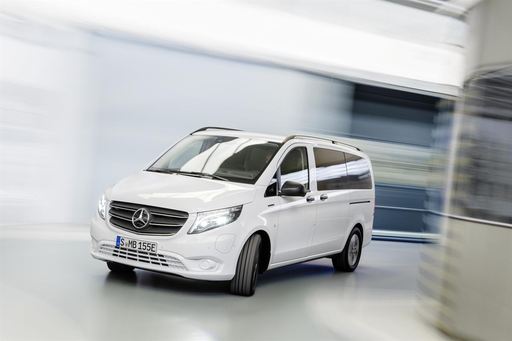 @ mercedes-benz.at
@ mercedes-benz.at

|

|
|
|
|
Costs and Consumption |
|
|---|---|
|
Price
30800 - 37200 £
|
Price
28800 - 54700 £
|
|
Consumption L/100km
-
|
Consumption L/100km
6.8 - 9.7 L
|
|
Consumption kWh/100km
16.7 - 17.8 kWh
|
Consumption kWh/100km
21.2 - 26.5 kWh
|
|
Electric Range
270 - 385 km
|
Electric Range
304 - 474 km
|
|
Battery Capacity
39 - 59 kWh
|
Battery Capacity
60 - 90 kWh
|
|
co2
0 g/km
|
co2
0 - 222 g/km
|
|
Fuel tank capacity
-
|
Fuel tank capacity
57 - 70 L
|
Dimensions and Body |
|
|---|---|
|
Body Type
Hatchback
|
Body Type
Cargo Van
|
|
Seats
5
|
Seats
2 - 5
|
|
Doors
5
|
Doors
4
|
|
Curb weight
1580 - 1756 kg
|
Curb weight
1916 - 2518 kg
|
|
Trunk capacity
385 - 394 L
|
Trunk capacity
-
|
|
Length
4490 mm
|
Length
4895 - 5390 mm
|
|
Width
1788 mm
|
Width
1928 mm
|
|
Height
1540 - 1545 mm
|
Height
1910 - 1945 mm
|
|
Payload
384 - 415 kg
|
Payload
567 - 884 kg
|
Engine and Performance |
|
|---|---|
|
Engine Type
Electric
|
Engine Type
Diesel, Electric, Petrol
|
|
Transmission
Automatic
|
Transmission
Manuel, Automatic
|
|
Transmission Detail
Reduction Gearbox
|
Transmission Detail
Schaltgetriebe, Automatikgetriebe
|
|
Drive Type
Front-Wheel Drive
|
Drive Type
Rear-Wheel Drive, Front-Wheel Drive, All-Wheel Drive
|
|
Power HP
150 - 217 HP
|
Power HP
102 - 237 HP
|
|
Acceleration 0-100km/h
6.9 - 7.9 s
|
Acceleration 0-100km/h
-
|
|
Max Speed
144 - 157 km/h
|
Max Speed
120 - 140 km/h
|
|
Torque
320 - 340 Nm
|
Torque
270 - 500 Nm
|
|
Number of Cylinders
-
|
Number of Cylinders
4
|
|
Power kW
110 - 160 kW
|
Power kW
75 - 174 kW
|
|
Engine capacity
-
|
Engine capacity
1950 - 1999 cm3
|
General |
|
|---|---|
|
Model Year
2019
|
Model Year
2024 - 2025
|
|
CO2 Efficiency Class
A
|
CO2 Efficiency Class
G, A
|
|
Brand
Nissan
|
Brand
Mercedes-Benz
|
Nissan Leaf
Introduction to the Nissan Leaf: A Pioneer in Electric Mobility
The Nissan Leaf has established itself as a trailblazer in the realm of electric vehicles (EVs) since its launch. As we delve into its present-day iterations, the Leaf continues to soar in popularity due to remarkable advancements in technology and sustainability. Let's explore what makes the Nissan Leaf a standout in today's automotive market.
Power and Performance: Under the Hood of the Nissan Leaf
The Nissan Leaf boasts a power output ranging from 150 to 217 PS, depending on the battery option chosen. The vehicle's electric motor, a product of cutting-edge engineering, offers instant torque ranging from 320 to 340 Nm, resulting in impressive acceleration capabilities. The 0 to 100 km/h dash is achieved in as little as 6.9 seconds, showcasing its prowess in electric performance.
Battery Technology: Efficient Energy Management
When discussing the Nissan Leaf, battery technology is at the forefront. The available battery capacities range from 39 to 59 kWh, supporting an electric range between 270 to 385 km. This flexibility allows drivers to choose a model that best fits their driving habits, providing peace of mind for longer journeys without frequent recharging.
Sustainability: The Environmental Edge
One of the primary attractions of the Nissan Leaf is its commitment to sustainability. As an all-electric vehicle, it produces zero CO2 emissions, placing it in the top tier of the CO2-efficiency class with an 'A' rating. This clean energy approach contributes significantly to reducing environmental impact and supports Nissan's drive towards a greener future.
Design and Comfort: Aesthetic Appeal and Practicality
The Nissan Leaf is not just about efficiency; it's also designed for comfort and utility. With its sleek hatchback body and dimensions of 4490 mm in length, 1788 mm in width, and a height of up to 1545 mm, it offers ample interior space. The boot capacity ranges from 385 to 394 litres, providing sufficient storage for everyday needs. The model accommodates five passengers comfortably, ensuring a pleasant ride for everyone.
Innovations and Safety: Advanced Features for Peace of Mind
Nissan equips the Leaf with an array of intelligent features that enhance safety and convenience. The available equipment lines, including N-CONNECTA, Tekna, e+ N-CONNECTA, and e+ Tekna, offer varying levels of technology integration. ProPILOT Assist, e-Pedal, and a comprehensive suite of driver-assistance technology are just a few examples that highlight Nissan's commitment to innovation in the EV market.
Conclusion: The Nissan Leaf Continues to Lead
With prices ranging from €35,900 to €43,400, the Nissan Leaf remains an attractive choice for those looking to embrace electric mobility. It perfectly balances performance, design, and sustainability, making it a compelling choice in the competitive EV landscape. The Nissan Leaf not only represents the future of driving but also reinforces why it continues to be a leader in the electric vehicle community.
Mercedes Vito Transporter
Introducing the Versatile Mercedes-Benz Vito Transporter
The Mercedes-Benz Vito Transporter has long set the standard for practicality and innovation in the commercial vehicle market. By combining robust engineering with state-of-the-art technology, the Vito Transporter is perfectly suited to meet the diverse needs of today's businesses. With a range of body styles, powertrains, and interior configurations, this vehicle is truly designed to be the perfect partner in productivity.
Powertrain Options: Flexibility at its Finest
The Vito Transporter comes with an impressive array of powertrain options to suit any business requirement. From traditional diesel engines to electric powertrains, Mercedes-Benz ensures maximum efficiency and performance. Diesel options range from 102 to 237 horsepower, offering both manual and automatic transmission systems, while the electric models provide impressive efficiency with up to 313 km of range on a single charge.
Interior and Cargo Space: Tailored to Your Needs
The interior of the Vito Transporter has been meticulously designed to offer functionality without sacrificing comfort. Depending on the model, it accommodates between two to five seats, providing ample room for passengers and cargo alike. With a maximum load capacity of up to 1000 kg, the Vito is as capable of transporting heavy goods as it is of carrying a full crew.
Advanced Features: Beyond the Essential
With innovation at its core, the Vito Transporter is equipped with cutting-edge technology to enhance both driver experience and safety. The model offers a suite of advanced safety features including active brake assist, attention assist, and crosswind assist, ensuring every journey is as safe as it is smooth. Additionally, the optional MBUX multimedia system brings an intuitive touch interface and voice control to the driving experience.
Efficiency and Emissions: A Commitment to Sustainability
The Vito Transporter showcases Mercedes-Benz's commitment to sustainability through fuel-efficient engines and its all-electric offerings. Diesel variants offer CO2 emissions efficiency ranging from 178 to 206 g/km, while the electric Vito model eliminates tailpipe emissions entirely. This drives not only eco-friendly business practices but also cost savings over time with reduced fuel consumption.
Conclusion: A Reliable Partner for Every Business
Ultimately, the Mercedes-Benz Vito Transporter is more than just a vehicle; it is a reliable business partner that adapts to meet the challenges of various industries. By blending robust design with innovative technology, it delivers exceptional performance and utility. Whether you require efficient diesel fuel economy or zero-emission electrification, the Vito Transporter is a versatile choice to handle any task with ease.
The prices and data displayed are estimates based on German list prices and may vary by country. This information is not legally binding.
